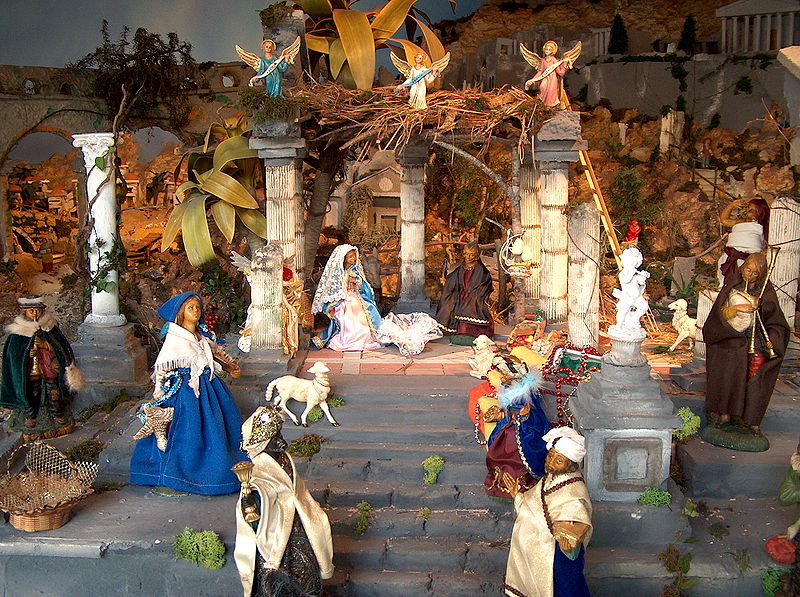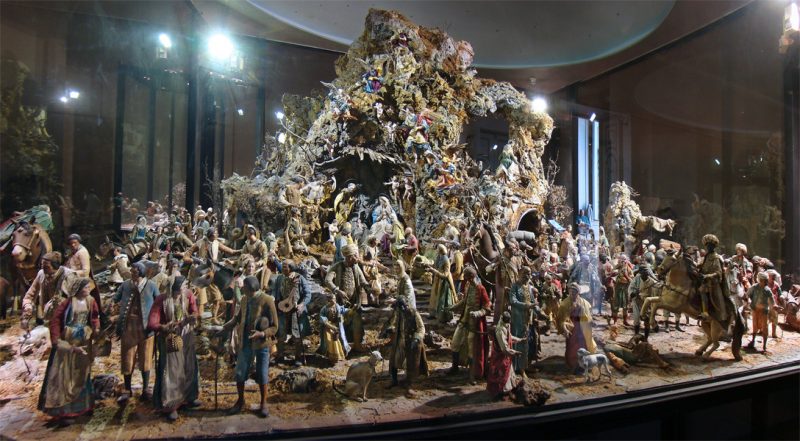The representation of the crib, intended as a static complex, most likely originates in the Middle Ages; animated, on the other hand, has a longer history. Today it is one a very widespread tradition in the countries of the world and it is a well-established custom especially in Italy. Over the centuries there has been an intense enrichment of the scenic composition. The meanings have remained unchanged although today they tend to identify Christmas in the strict sense of the 'Nativity'.
The crib of Greccio
To talk about the nativity scene, we need to go back over the centuries. Particularly significant is the construction that took place in the small village of Greccio in 1223: commissioned by San Francesco, here is the first Nativity which was authorized by Pope Honorius III. The poor man of Assisi is in fact believed to be the inventor of crib, the one who placed 'the Holy Family' on the scene. Theatrical 'representations' boast notoriously broader pages of history. The religious component, on the other hand, faces a path that is at times parallel but which is not directly grafted onto the theatrical circuit. It is certainly the intervention of St. Francis that decisively influenced the birth of the new representative genre. The nativity scene is born. The first performance was lived in Greccio, a village now included in the province of Rieti. In the upper Basilica of Assisi, among the twenty-eight scenes of the cycle of frescoes on the Stories of St. Francis, the thirteenth is the 'Greggio Nativity'.

From religion to art history
The creation of static nativity scenes was not long in coming. Without losing sight of the Christian meaning, a new constructive trend begins that leads to the creation of unique and refined pieces. In addition to the classic components: Jesus, St. Joseph and the Madonna, the first shepherds appear. The Bambinello, more and more detailed, becomes a real 'precious jewel'. Due to its central role, it is often prominent in shape and size. As it spreads, it is mainly churches that request it. Here you will find life-size sculptures. Many will boast authentic treasures. Even private individuals are starting to ask for it and a fairly flourishing market is established. In less well-off families, they are made with common materials. The scene is increasingly complex. Natural elements flank the characters and are ever closer to reality. Italy is the country where it first becomes an indispensable custom.

The long Italian tradition
Now known all over the world, it is the production of handcrafted figurines made by Neapolitan masters. The nativity scene of San Giovanni a Carbonara which takes its name from the church of the same name. The figures that made it up are largely preserved in the National Museum of San Martino. Street San Gregorio Armeno it is known precisely for the artisan workshops of nativity scenes. There are many elements. The characters, with different shapes and chromatic finishes, offer a huge choice. In Italian families, the realization, which usually takes place8th December, leaves room for imagination. What they all have in common is the hut that houses the nativity. Outside there are the Magi and various shepherds. Not infrequently an Angel and a star appear. Farm animals, barns, snow-capped mountains. The most laborious have flowing rivers and working mills.





